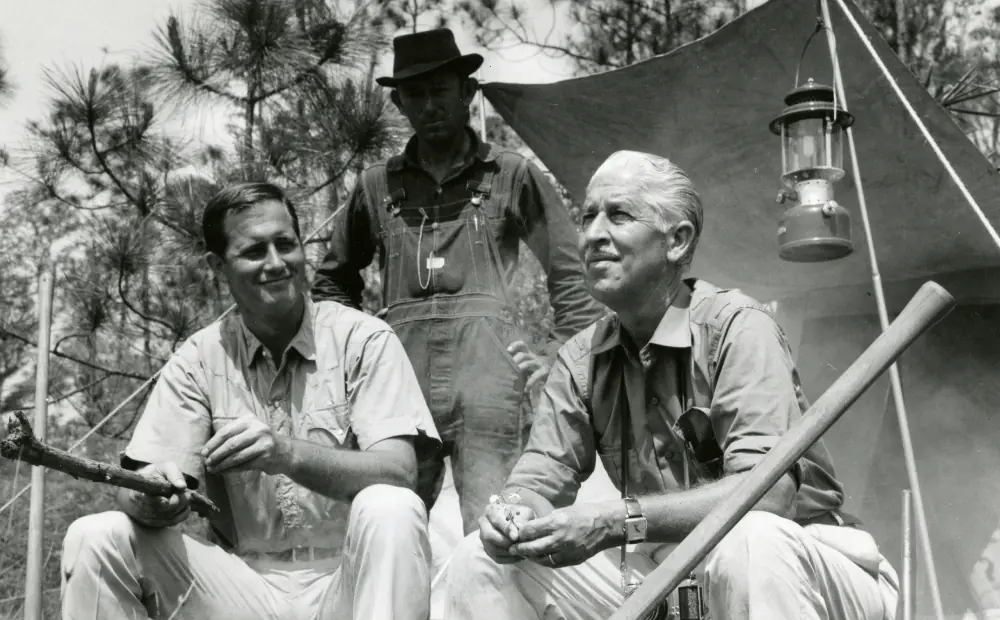0:00
With more than 8000 miles of coastline, Florida is a haven for sea life.
0:06
Like sea turtles and manatees that have relied on its abundant shores for millions of years, long before humans took a single breath, the sunshine states, warm waterways and seagrass meadows are life sustaining resources for the manatees, while endangered sea turtles count on its hundreds of miles of sandy beaches for nesting.
0:30
But rampant coastal development and heavy water traffic transformed this peaceful habitat into a deadly aquatic highway.
0:38
So just how badly do these factors affect our ocean friends like sea turtles and manatee?
0:45
Last year was more than double the number of animals we were taken in the previous couple years, and boat strikes are human related.
0:52
Turtles like to bask at the at the surface, so they're sitting out there warming up.
0:56
They blend in with the environment and a boat just may not see them.
1:01
These animals need our protection now more than ever, and Mutual of Omaha's wild Kingdom has been sharing these stories for decades.
1:10
One of the largest turtles in the world is the giant loggerhead, which returns as an adult to the beach where it was hatched in order to lay its eggs.
1:19
There is much concern among scientists and conservationists for the survival of the giant loggerhead.
1:26
Almost 90% of all sea turtle nesting in the United States happens on Florida's beaches. And Mote
1:33
Marine Laboratory and Aquarium in Sarasota surveys nesting sites to determine the negative impact from humans.
1:41
Dr. Rae is on location, capturing another successful conservation story.
1:46
So my friend David Mizejewski from the National Wildlife Federation has joined me as a guest host.
1:52
We're meeting with biologist Melissa Maxie because a brand new sea turtle nest was spotted this morning by a volunteer right here on Vonboat Key Beach.
2:03
So how many nests do you get on this beach?
2:05
Annually?
2:06
On this beach we get about 1000 nests each year.
2:08
But we cover 35 miles, which is five different islands and beaches and that in that area we get 3 to 5000.
2:15
Wow, that's a lot.
2:17
Yeah.
2:17
Right away we see large tracks in the sand so you can tell what species it is just by the tracks, right?
2:26
Yes.
2:27
From the actual crawl itself, we can tell that it's a loggerhead based on the alternating tracks.
2:33
So you can tell by the mound about where you think the eggs are.
2:35
Yes.
2:36
Yeah.
2:37
We helped Melissa stake off this nest to protect it.
2:40
Then we record its exact location using GPS and a good old fashioned tape measure.
2:46
So it's 90 feet from 90 feet.
2:48
OK.
2:49
There's another nest where hatchlings actually emerged last night and we could see their little tracks going down to the beach.
2:55
Yes, there is.
2:55
And it's just right down the beach a little bit.
2:59
So this is the nest, right?
3:00
This is the nest.
3:01
Yeah.
3:01
You can see the hatch from here.
3:02
Oh, my gosh.
3:04
These trucks look very different.
3:06
Oh, look at this.
3:07
These have all hatched out.
3:08
You can see the track and they all go directly to the water.
3:12
So we know that all of these guys made it at least to the ocean.
3:15
It looks like they're almost in a formation here.
3:18
And I'm looking at the width of all the tracks.
3:20
There must be 40 or 50 separate tracks in there at least.
3:23
Yeah, I would say we could have easily 7075.
3:27
So this looks like a a successful hatch.
3:29
I would say this is probably a pretty successful congratulations.
3:32
Thank you.
3:33
No problems.
3:33
They all go the right direction to have this many tracks.
3:36
This is what we shoot for with every nest.
3:39
Is there a really valuable data you can determine from the remaining egg shells?
3:44
That is, the core of the data is we're going to count to figure out how successful the hatch was.
3:49
So using this nest with all of the other ones that are part of that sample to figure out the overall hatch success of the island.
3:55
And each nest has, what, roughly 100 eggs in it?
3:58
Yeah, on average, part of why sea turtles lay so many nests and have so many eggs in each nest is to put as many out as possible in hopes that one or two make it to adulthood to replace them in the population.
4:12
The estimate is 1 in 1000 hatchlings will make it to maturity.
4:15
It could be even one in 10,000 or even lower.
4:22
With survival rates that low, these endangered animals need all the help they can get.
4:28
Many rescued hatchlings are temporarily brought to special medical facilities to recoup.
4:35
So in this lab area here, you have a young turtle that came in that was found in a Marina.
4:40
You saved it.
4:41
Now, what's going to happen next here?
4:42
So we just want to make sure he's gaining enough weight growing properly.
4:47
In a week, he'll go back out.
4:48
We'll find a weed line and let him go.
4:50
Up you go, getting ready for his release.
4:59
45.79 is when he was last measured and when he came in he was 45.78.
5:06
This is a good sign.
5:07
He's growing, definitely growing, and next week he goes out, he goes out.












